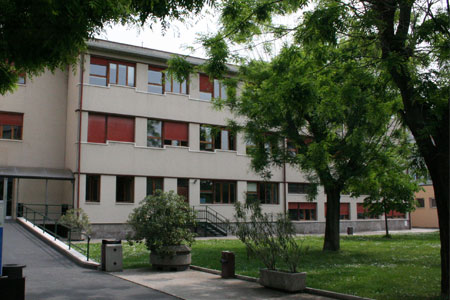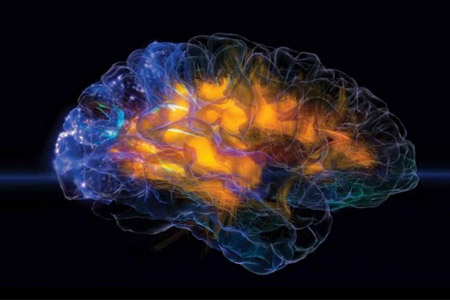In several human inflammatory diseases with immune pathogenesis, cytokines produced by T helper lymphocytes and T-helper-activated effector cells are generally considered responsible for the morphological and functional tissutal damage.
A) Role of cytokines in glomerulonephritis.
T helper cell (Th1) cytokines have been reported to play a pathogenic role in some type of glomerulonephritis, such as IgA glomerulonephritis, Heymann nephritis, lupus nephritis (1-3). IgA nephropathy is one of the most common forms of primary glomerulonephritis in adults leading to functional damage. This is characterised by mesangil deposition of IgA with subsequent mesangial expansion and proliferation. No therapeutic agent has been shown to influence renal function favourably in spite of several positive reports on corticosteroids, fish oil, and angiotensin-converting enzyme inhibitors (4). A recent study (1) demonstrates that the ratio between interferon-gamma (IFN-gamma), which is representative of the Th1 cytokines, and interleukin-10 (IL-10), representative of Th2 cytokines, is higher in patients with renal dysfunction than in those with normal renal function. Besides the well known activation of cytotoxic T lymphocytes, natural killer cells, and macrophages, IFN-gamma also changes the phenotype of a variety of resident cells in renal tissue, inducing the expression of multiple histocompatibility complexes (MHC) class I and II, intercellular adhesion molecule-1 (ICAM-1) (5-6), inducible nitric oxide synthase (iNOS) (7), chemokines (8). These effects result in the initiation and promotion of inflammatory processes in glomeruli. Moreover, in glomerulonephritis, platelet-derived growth factor (PDGF) (9), angiotensin II (Ang-II) (10) and lectin (11) seem to be involved in the development of mesangial proliferation and glomerulosclerosis. PDGF, Ang II and lectin have been reported to induce tyrosine phosphorylation of the signal transducer and activator of transcription 1 (STAT-1) (12-13,11). The down-regulation of the signal transduction through activated STAT-1 might be advantageous to suppress various deleterious effects of these mediators on mesangial cells. In addition, other inflammatory cytokines, such as Tumor Necrosis Factor-alfa (TNF-alfa) and Interleukin-1-beta (IL-1-beta), that are released in glomerulonephritis, could represent autocrine growth factors for glomerular cells (14-15). The interaction between these cytokines and IFN-gamma results in an enhanced expression of MHC, iNOS, ICAM-1 molecules (15), and this could increase cell damage. The TNF-alfa and IL-1-beta-induction of gene expression required the activation of nuclear factor-kappaB (NF-kB) (16). Thus, also the inhibition of NF-kB by pharmacological intervention may represent a multimodal approach to control the inflammatory process during glomerular disease (17). Finally, Interleukin-6 (IL-6) might take part into the inflammatory process and the stimulation of mesangial cell growth by activating multiple signalling pathways including MAPK cascade, STAT1 and STAT3 (18-19). Neutralisation of IL-6 activity may contribute to control the inflammatory disease.
B) Role of cytokines in skin inflammatory disease.
Important to the expression and the regulation of many skin disorders, including psoriasis, atopic and allergic contact dermatitis, is the crosstalk between infiltrating T cells and resident cell skin populations which are both targets and modulators of T-cell function. Activated T lymphocytes markedly infiltrate the skin and, through the release of a broad array of lymphokines, activate epidermal keratinocytes which become a source of inflammatory mediators capable of initiating and amplificating of skin immune response (20). In particular, IFN-gamma and TNF-alfa induces keratinocytes to express iNOS, cytokines, such as IL-1, TNF and GM-CSF, membrane molecules (i.e. ICAM-I and MHC class II) and chemokines (i.e. IP-10, RANTES) essential for the recruitment, retention and activation of specific leukocyte subpopulations in the skin (21). Moreover, keratinocytes from patients with atopic dermatitis and psoriasis show an overproduction of chemokines RANTES and IP-10 in response to inflammatory cytokines, in respect to these present in human normal keratinocytes (22). Other than modulating and amplifying skin inflammatory responses, keratinocytes represent an important target of T lymphocyte-mediated cytotoxicity. In particular, following IFN-gamma treatment, keratinocytes express MHC class II, ICAM-1 and up-regulate Fas, and become thus susceptible to the Th1- and Tc-driven killing, which are mediated primarily by FasL and perforin pathways, respectively (23). Thus, IFN-gamma is considered an important mediator of skin inflammatory diseases, and the blockade of IFN-gamma signalling remains an important target aim of more effective preventive and therapeutic strategies.
C) Signalling pathway of IFN-gamma.
A primary signalling mechanism of IFN-gamma has been revealed (24). The Janus tyrosine kinases (JAKs) associate with the IFN-gamma receptor and activate STAT1, by phosphorylation at Tyr701. STAT-1 omodimers translocate to the nucleus where they bind to specific DNA elements in the promoter region of IFN-gamma-inducible genes, and direct gene transcription. The c-terminal transactivation region of STAT1, which includes Ser727, that is phosphorilated by Raf-1/MAP kinases, is also important for the transcriptional ability (25). The analysis of STAT1 gene knockout mice revealed that STAT1 is critical for the response to IFN-gamma (26). Only a few molecules have been so far identified as specific inhibitors of STAT signalling. Fludarabine, a nucleoside analog used in the treatment of hematologic malignancies, has recently been reported to inhibit specifically STAT-1 in human lymphocytes by acting on the synthesis of STAT-1 protein (27). Recently (28), down-regulation of interferon-gamma signalling by gene transfer of STAT1 mutant in mesangial cells was suggested as a way to modulate the inflammatory responses. Moreover, since members of the suppressor of cytokine signalling (SOCS) family can suppress responses to IFN-gamma, the overexpression of SOCS-1 and SOCS-3 represents an approach for impairing IFN-gamma action on keratinocytes to improve cytokine-dependent diseases (29). Overexpression of SOCS-1 has been reported to protect pancreatic beta cell from the cytotoxic effects of the cytokine (30-31). Even though, it is difficult to use in vivo gene transfer of the STAT-1 mutant or the SOCS-1 and the SOCS-3. Therefore, a pharmacological approach is also recommended. In a recent report (32), we have shown that the green tea polyphenol epigallocatechin-3-gallate (EGCG) exerts an inhibitory action on the IFN-gamma-elicited STAT-1 activation by inhibiting the tyrosine-phosphorylation of STAT-1, rather than the modulation of the amount of STAT-1 protein. Therefore, the physiologically relevant IC50 value of green tea extract in inhibiting the activation of STAT-1 in human tumoral epithelial cells should make the green tea polyphenols and other natural compound promising candidates as STAT-1 signalling modulating drugs. However, their mechanism of action is not well understood: these polyphenols may inhibit JAKs and MAPKs or activate specific tyrosine phosphatases. Other natural compounds (Devil’s Claw, Ginkgo Biloba, Artichoke, St. John’s Wort, Glycyrrhetinic Acid) might be able to modulate the signal transduction of inflammatory cytokines by affecting the activity of kinases and nuclear transcription factors. No studies are so far available on the effects of these natural compounds on STATs activation. Our preliminary data suggest that some of these can inhibit the signal transduction machinery. The inhibition of STATs and other transcription factors that cooperate in promoting the inflammatory process may address the suppression of the several genes participating in cellular inflammation diseases.







